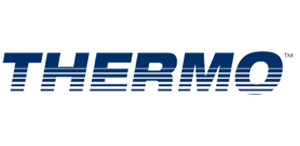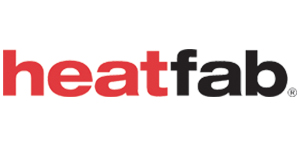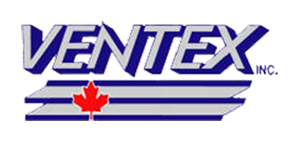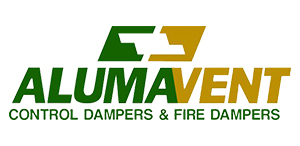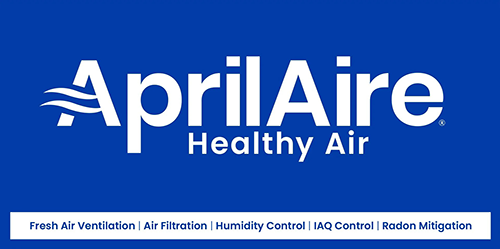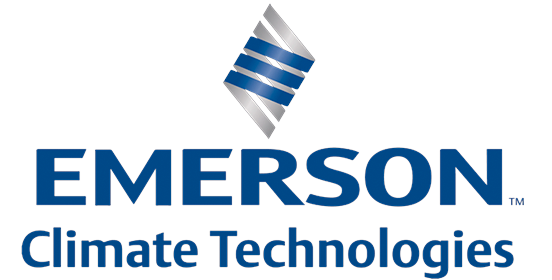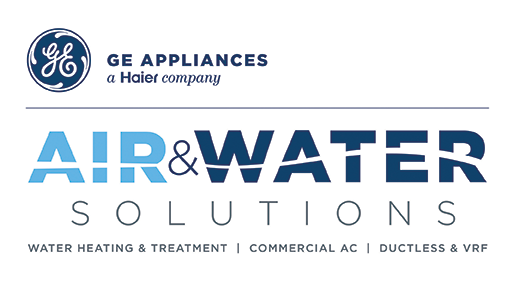FAQ
Why should I purchase a new heating or air conditioning system?
- We realize that purchasing a heating or air conditioning system is no small matter. However, if your existing system is old, in need of repair or simply inefficient, purchasing a new unit, one which can be as much as 60% more efficient than a system purchased just 10 years ago, can offer long-term benefits.
- Rather than continuing to pay for ongoing maintenance and costly monthly bills, invest in a new system today that will save you money for years to come.
How can I find the system that's right for me?
- There are many heating and air conditioning systems to choose from today. Your Mechanical Contractor can draw on a vast degree of heating and air conditioning knowledge and experience to help you decide on the system that best fits your specific needs. The size and age of your home, as well as the number of rooms, climate, local and regional utility costs, and utility incentive/rebate programs are all factors that will affect the functionality and, therefore, selection of your system. The mechanical contractor utilizing the latest technology, consider all these factors while assisting you in choosing the best system for your home.
- Consumers seeking to replace an existing system often choose a new unit with equal or higher efficiency ratings compared to their previous system. Replacing a unit that is 10- to 15-years-old may reduce natural gas or electricity costs by 30 to 50%.
- Contact your mechanical contractor to help determine initial cost, warranty protection, service options, maintenance options, operating cost and proper installation.
How do I determine the size, or capacity, of my HVAC system?
- Factors affecting the size of your new system include the climate in your region, humidity levels, the number of windows in your dwelling, total square footage of your home, the direction your home faces, the number of heat-producing appliances in your home, the type of insulation you have and the number of people that live in your residence.
- A Mechanical contractor can perform the proper calculations to determine the appropriate heating or cooling unit for your home and lifestyle.
What goes into installing a new system?
- Putting a new system in a home that has not had central air and heat before will require the installation of ductwork, insulation, refrigerant piping, electrical service, wiring, thermostat, condensate piping, flue piping, flue terminations, chimney liner, slabs, filter, driers, registers, grills, drain pans and evaporator coil. Beyond equipment, the most important component installed with a new system, however, is the ductwork.
- Ductwork is composed of two parts, supply and return. Supply duct is attached to the outflow of the new system, delivering air to each zone in a home. The amount of air reaching each zone is determined by the size of supply ductwork connecting it to your system. Your dealer will help you determine the size of all the supply ductwork in your home.
- The second part of the ductwork, the return duct, attaches to the inlet of the new system and draws air out of the spaces to be heated or cooled. Attached to the return duct is the filter. The filter should be placed as near to the furnace or air handler as possible. Ductwork can be either fiberglass or metal and must be properly sized in order to evenly distribute the proper amount of air to each room.
What happens when I replace my old system?
- To install the most efficient HVAC system in your household, a detailed inspection should first be performed by your installation contractor.
- The inspection by your contractor should include, as a minimum, the inspection of your home’s ductwork, insulation, refrigerant piping, electrical service, wiring, thermostat, condensate piping, flue piping, flue terminations, chimney liner, slabs, filter, driers, registers, grills, drain pans and evaporator coil.
How long will my system last?
- Maintenance and service play a key role in the lifecycle of a heating or air conditioning system. If all recommended maintenance and service actions are taken, an air conditioner can last 12 to 15 years and a gas furnace 20 to 25 years.
Do I need to change my indoor coil?
- It is generally a good idea to replace the indoor coil if you are also replacing your air conditioner or heat pump. There is a correlation between the efficiency of your heating or cooling system and the performance of the indoor coil and changing out the current indoor coil for a new one may be critical to optimizing the performance, the efficiency and the savings potential of your new system.
Where can I locate my air handler or furnace system?
- The system can actually be located in several different places. A system with up-flow application might be located in the basement, while a system with a horizontal application may be found in your attic. A self-contained, or single package unit, could be located outside on a slab or on the roof. Your garage could house an up-flow, down-flow or horizontal application system.
What is a heat pump?
- A heat pump is a device used for either the heating or cooling of a space by transferring hot and cold between two reservoirs.
- A heat pump can act like an air conditioner, transferring heat from inside to out, or like a heater as it transfers exterior heat to the interior. A winter day with a temperature of 32º Fahrenheit still produces enough heat to warm a space when the air is transferred by heat pump.
What can I do to control the humidity levels in my home?
- Humidity levels can be reduced by using a variable-speed furnace or air handler as part of your HVAC system. Variable speed units run longer, at lower speeds, allowing air to constantly circulate against the cooling coil and remove more moisture.
- Variable-speed motors also use less electricity than regular motors, reducing your energy costs.
What can I do before calling someone to service my system?
- HVAC systems are complicated networks of machinery that should be serviced by a certified professional. However, if your HVAC system seems to be malfunctioning, you can try a few basic steps, which may correct your problem, prior to calling a service professional. If you do not feel comfortable performing any of these tasks, however, do not hesitate to call an HVAC contractor.
- Disconnect and reconnect your indoor and outdoor switches.
- Make sure your circuit breakers are in the ON position.
- Make sure your filters are clean.
- Open supply and return vents and make sure they are unobstructed.
- Check the settings on your thermostat.
- Make sure the system switch is on the appropriate COOL or HEAT setting.
What is AFUE?
- AFUE, or Annual Fuel Utilization Efficiency ratio is used to rate furnace efficiencies by dividing the ratio of heat output by heat input. This measurement describes how well fuel, gas or oil is consumed to produce heat by a furnace. As the AFUE rate increases, the efficiency of your furnace also increases, lowering your fuel costs. Furnaces manufactured in the United States are required to have at least an 80% AFUE.
What is HSPF?
- HSPF, or the Heating Seasonal Performance Factor, rates the efficient operation of the heating portion of the heat pump. As the HSPF increases, the unit functions at a more efficient level. New units in the United States have HSPF ratings from 7.0 to 9.4.
What is Freon R-22?
- R-22 is the common name for hydro-chlorofluorocarbon (HCFC). R-22 has been used as a refrigerant by HVAC manufacturers for over 40 years, but studies in the past decade have shown that HCFCs contain chlorine, an ozone-depleting agent. For this reason, the Montreal Protocol has set a target date for January 1, 2010, on which HVAC manufacturers must cease the production of products that use R-22.
What is R-410A?
- R-410A is the common name for an emerging hydro-fluorocarbon (HFC) that is being used as a refrigerant in the HVAC industry. R-410A is more environmentally friendly than R-22 and is being seen as the most likely replacement for R-22 by HVAC manufacturers. At the beginning of 2010, the use of alternate refrigerant will be required in HVAC manufacturing.
What is ENERGY STAR?
- ENERGY STAR is a program that was created by the US Environmental Protection Agency (EPA) to help businesses and individuals make energy efficient purchases.
- This program places the ENERGY STAR label, a small blue and white logo, on items that meet superior energy efficiency standards. This label provides an easy way for consumers to identify quality, high efficiency products.
- For more information about the Energy Star program, please view their website at www.energystar.gov.
How does a central air conditioning system work?
- The typical central air conditioning system is a split system, with an outdoor air conditioning, or “compressor bearing unit” and an indoor coil, which is usually installed on top of the furnace in the home.
- Using electricity as its power source, the compressor pumps refrigerant through the system to gather heat and moisture from indoors and remove it from the home.
- Heat and moisture are removed from the home when warm air from inside the home is blown over the cooled indoor coil. The heat in the air transfers to the coil, thereby “cooling” the air.
- The heat that has transferred to the coil is then “pumped” to the exterior of the home, while the cooled air is pumped back inside, helping to maintain a comfortable indoor temperature. Central air conditioning can also be provided through a package unit or a heat pump.
- Indoor comfort during warm weather – Central air conditioning helps keep your home cool and reduces humidity levels.
- Cleaner air – As your central air conditioning system draws air out of various rooms in the house through return air ducts, the air is pulled through an air filter, which removes airborne particles such as dust and lint. Sophisticated filters may remove microscopic pollutants, as well. The filtered air is then routed to air supply ductwork that carries it back to rooms.
- Quieter operation – Because the compressor bearing unit is located outside the home, the indoor noise level from its operation is much lower than that of a free-standing air conditioning unit.
How does a central heating system work?
- A furnace works to keep a home warm in the winter and plays a critical part in the operation of an air conditioning system.
- Furnaces produce heat through the combustion of natural gas in the furnace’s burner. The heat produced from this process then passes through a heat exchanger. Air from your home’s return air ducts is blown over the heat exchanger, thus warming the air.
- The furnace’s blower then blows the warmed air into the ductwork, which carries and disperses the warmed air throughout the home.
- During warmer months, the blower inside a furnace continues to circulate return air throughout the home–only this time, the return air has been cooled by being blown over the indoor coil portion of the home’s split-system air conditioning system. The condensing coil is typically installed on top of the furnace.
- Indoor warmth any time it is required.
- Energy efficiency -The efficiency of a furnace can be determined by its AFUE– or Annual Fuel Utilization Efficiency. The minimum efficiency level for furnaces currently sold in Canada is 90% AFUE. A rating of “90% AFUE” means that for every dollar you spend heating your home; 90 cents are actually applied to the generation of warmth. Compared to many of the 60% AFUE furnaces in older homes, 90% AFUE furnaces are a significant improvement. However, for enhanced energy efficiency, you may wish to consider a 95+% AFUE furnace.
- Cleaner air – As your HVAC system draws air out of various rooms in the house through return air ducts, the air is pulled through an air filter, which removes airborne particles such as dust and lint. Sophisticated filters may remove microscopic pollutants, as well. The filtered air is then routed to air supply ductwork that carries it back to rooms. Whenever the HVAC system is running, this cycle repeats continually, constantly filtering and cleaning the air in your home.
- This cleaning process improves with the installation of a variablespeed furnace. Variable-speed furnaces use variable-speed blowers, which shift between several speeds. These furnaces will run longer at a low speed, which causes them to filter the indoor air more frequently.
- And remember – because the furnace plays an important role in the operation of the air conditioner, its variable-speed blower helps maintain both a consistent indoor temperature and improved air quality year-round.
We Also Have
Supplementary Services
Residential and Commercial Duct Work
Air Conditioners
Dampers
Selkirk Chimneys
Heat Exchangers
Registers
Wood Fireplaces
Sheet Metal Tools
Thermostats
Air Filters
Inland Metal
